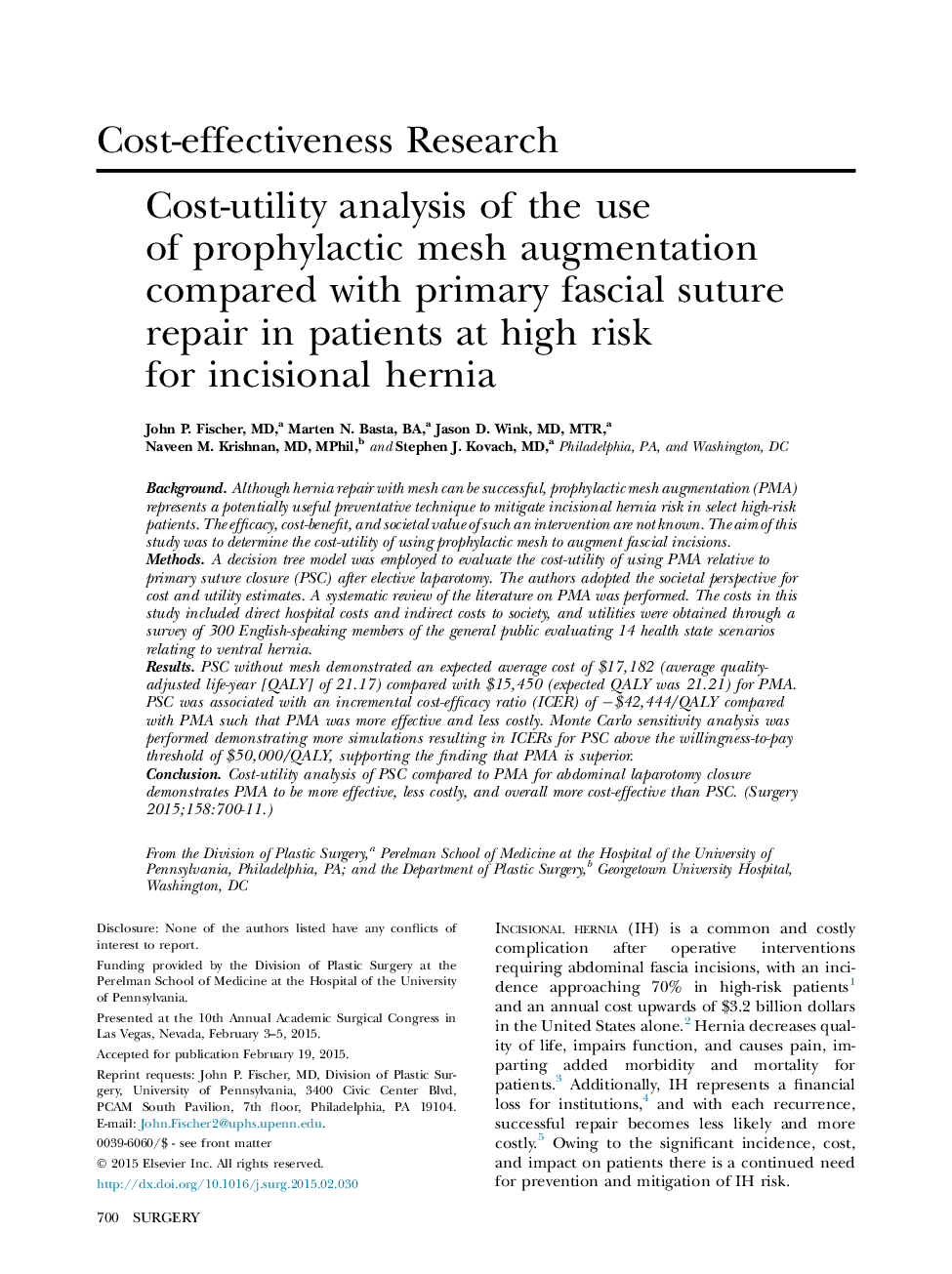| Article ID | Journal | Published Year | Pages | File Type |
|---|---|---|---|---|
| 4306698 | Surgery | 2015 | 12 Pages |
BackgroundAlthough hernia repair with mesh can be successful, prophylactic mesh augmentation (PMA) represents a potentially useful preventative technique to mitigate incisional hernia risk in select high-risk patients. The efficacy, cost-benefit, and societal value of such an intervention are not known. The aim of this study was to determine the cost-utility of using prophylactic mesh to augment fascial incisions.MethodsA decision tree model was employed to evaluate the cost-utility of using PMA relative to primary suture closure (PSC) after elective laparotomy. The authors adopted the societal perspective for cost and utility estimates. A systematic review of the literature on PMA was performed. The costs in this study included direct hospital costs and indirect costs to society, and utilities were obtained through a survey of 300 English-speaking members of the general public evaluating 14 health state scenarios relating to ventral hernia.ResultsPSC without mesh demonstrated an expected average cost of $17,182 (average quality-adjusted life-year [QALY] of 21.17) compared with $15,450 (expected QALY was 21.21) for PMA. PSC was associated with an incremental cost-efficacy ratio (ICER) of −$42,444/QALY compared with PMA such that PMA was more effective and less costly. Monte Carlo sensitivity analysis was performed demonstrating more simulations resulting in ICERs for PSC above the willingness-to-pay threshold of $50,000/QALY, supporting the finding that PMA is superior.ConclusionCost-utility analysis of PSC compared to PMA for abdominal laparotomy closure demonstrates PMA to be more effective, less costly, and overall more cost-effective than PSC.
